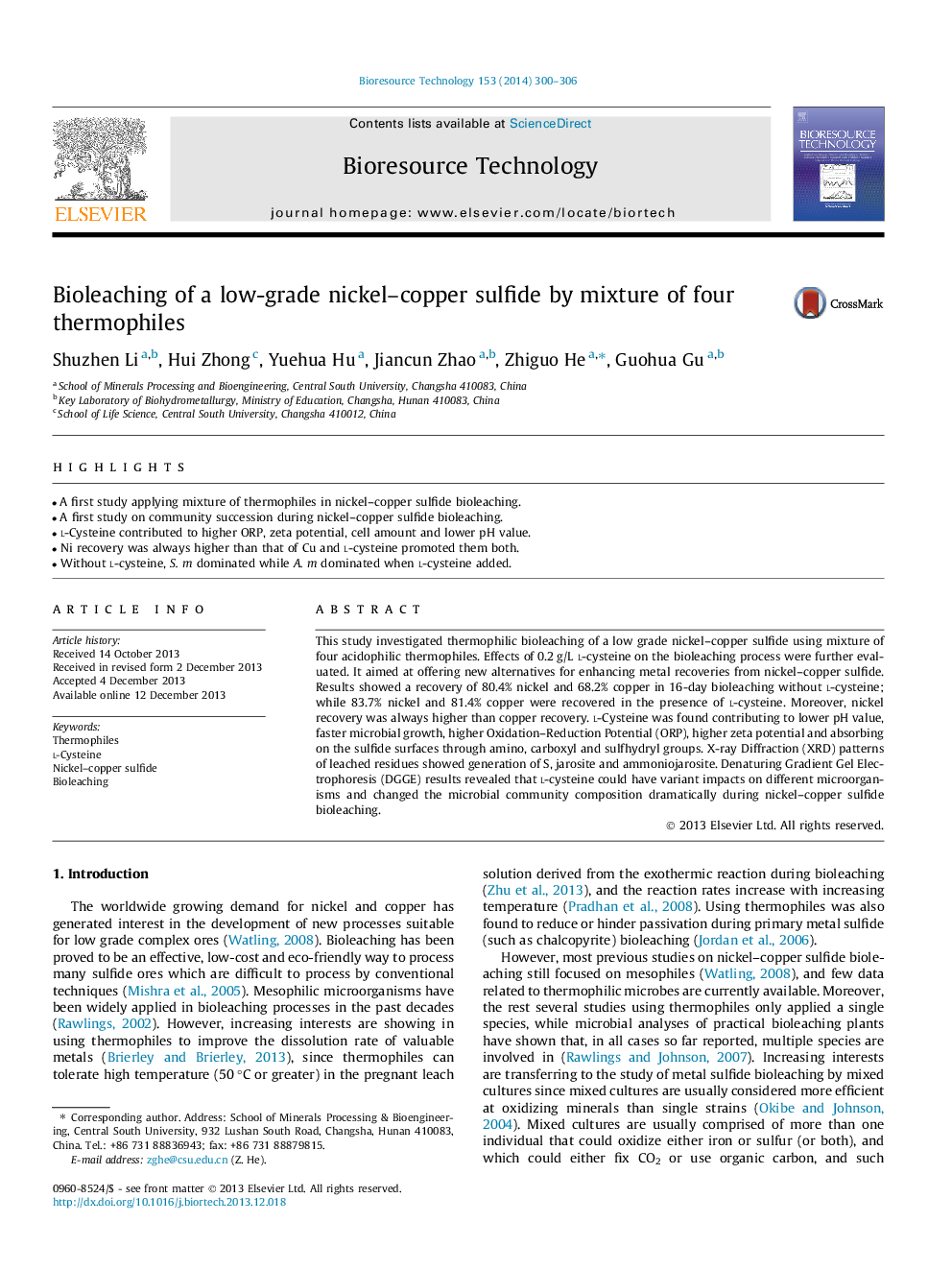| Article ID | Journal | Published Year | Pages | File Type |
|---|---|---|---|---|
| 680757 | Bioresource Technology | 2014 | 7 Pages |
•A first study applying mixture of thermophiles in nickel–copper sulfide bioleaching.•A first study on community succession during nickel–copper sulfide bioleaching.•l-Cysteine contributed to higher ORP, zeta potential, cell amount and lower pH value.•Ni recovery was always higher than that of Cu and l-cysteine promoted them both.•Without l-cysteine, S. m dominated while A. m dominated when l-cysteine added.
This study investigated thermophilic bioleaching of a low grade nickel–copper sulfide using mixture of four acidophilic thermophiles. Effects of 0.2 g/L l-cysteine on the bioleaching process were further evaluated. It aimed at offering new alternatives for enhancing metal recoveries from nickel–copper sulfide. Results showed a recovery of 80.4% nickel and 68.2% copper in 16-day bioleaching without l-cysteine; while 83.7% nickel and 81.4% copper were recovered in the presence of l-cysteine. Moreover, nickel recovery was always higher than copper recovery. l-Cysteine was found contributing to lower pH value, faster microbial growth, higher Oxidation–Reduction Potential (ORP), higher zeta potential and absorbing on the sulfide surfaces through amino, carboxyl and sulfhydryl groups. X-ray Diffraction (XRD) patterns of leached residues showed generation of S, jarosite and ammoniojarosite. Denaturing Gradient Gel Electrophoresis (DGGE) results revealed that l-cysteine could have variant impacts on different microorganisms and changed the microbial community composition dramatically during nickel–copper sulfide bioleaching.
